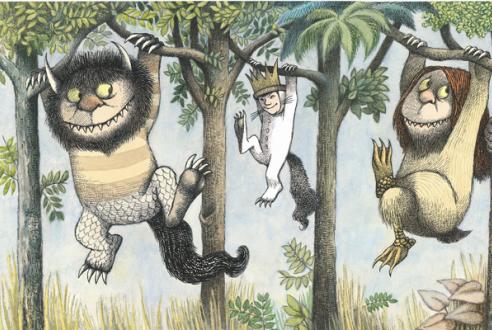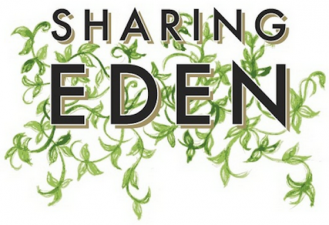Jewish American writer and illustrator Maurice Sendak died last week, at age 83.
The acclaimed master of kid-lit once said, “I don’t write for children. I write. And someone says, ‘That’s for children.'” Best known for his 1963 book Where the Wild Things Are, Sendak spoke through guileless prose and vivid imagery. Simple messages beautifully imagined: the essence of all his works. His books seem variations on a theme. Characters transcend negative feelings of rage, jealousy and envy; they experience change; and ultimately, they survive. Think Dostoyevsky, but with better pictures. Mickey Mouse and Sendak were born in the same year…but only Maurice had a Brooklyn address and Jewish Polish parents. Most of his extended family had perished in the Holocaust, and the Sendak household, like many others in their immigrant neighborhood, was steeped in survivor’s guilt. A frail child, he was frequently bedridden. Books provided reliable escape from a childhood he described as a “terrible situation”.
He grafted family culture into his works. The title “Wild Things” was inspired by the Yiddish phrase vilde chaya: rowdy children. He was a frequent interview for NPR’s Terry Gross, telling of dark memories inconsistent with his chosen trade.
“If I came up late for dinner, I’d hear about Leo and Benjamin and the other children who were my age who could never come home for supper and were good to their mothers but now they were dead, and I was lucky. … I hated [the people who died in the Holocaust] for dying because all they brought was violent scenes in the house between my mother and father and her pulling hair out of her head, my father diving onto the bed, and its vivid memories.”
He revealed that his grotesque monsters are his aunts and uncles, observed and absorbed over years of weekly visits to his mother’s Sabbath table. Their crooked teeth, hairy moles, and yellowed fingernails were scrutinized by the bored kid with the wild imaginings.
Their characters reborn much later, immortalized in cartoons. For the book’s operatic adaptation, the monsters stole his relatives’ names: Moishe and Tzippy, Aaron and Emile. His collaborations amplified his talents. Sendak illustrated Isaac Bashevis Singer’s first children’s story, Zlateh the Goat. Published in 1966, the book earned a Newberry Award.
He was an early advisor to the groundbreaking Children’s Television Workshop during development of Sesame Street.
A prolific set designer for operas and ballets, he adapted Wild Things for the stage in 1979. In the 1990s, Sendak collaborated with playwright Tony Kushner on a translation of children’s Holocaust opera Brundibár, originally written in 1938 by Jewish Czech composer Hans Krása. They joined forces on an illustrated book of the same name.
Published in 2003, it was named one of the New York Times (NYT) Book Review’s 10 Best Illustrated Books of 2003. That same year, Chicago Opera Theatre produced their adaptation of Brundibár. Last January, Sendak sat down with Stephen Colbert for an interview aired on “The Colbert Report”.
He had just published his latest book, Bumble-Ardy. With cranky humor and dazzling candor, the 83-year-old shared his views on children’s books in general, and Colbert’s own planned release in specific, summing it up with, “[It has] a terrible quality of ordinariness. The sad thing is, I like it.” Sendak endorsed Curious George and the entire Dr. Seuss catalog, but his monosyllable review of Give a Mouse a Cookie was,”Eh”. Peek at the two-part series, linked below. Tart and racy, but comedic gold.
The NYT called him “the most important children’s book artist of the 20th century.” During his lifetime, Sendak racked up a Caldecott Medal, the Hans Christian Anderson Award, a National Book Award, and the Laura Ingalls Wilder Medal. More recently he received a National Medal of Arts and the Astrid Lindgren Memorial Award. “I didn’t set out to make children happy. Or make life better for them. Or easier for them. I like them as few and far between as I do adults. Maybe a bit more because I really don’t like adults.” But there’s no question we liked you: Godspeed Maurice Sendak.
Image via TimeOutNewYorkKids



